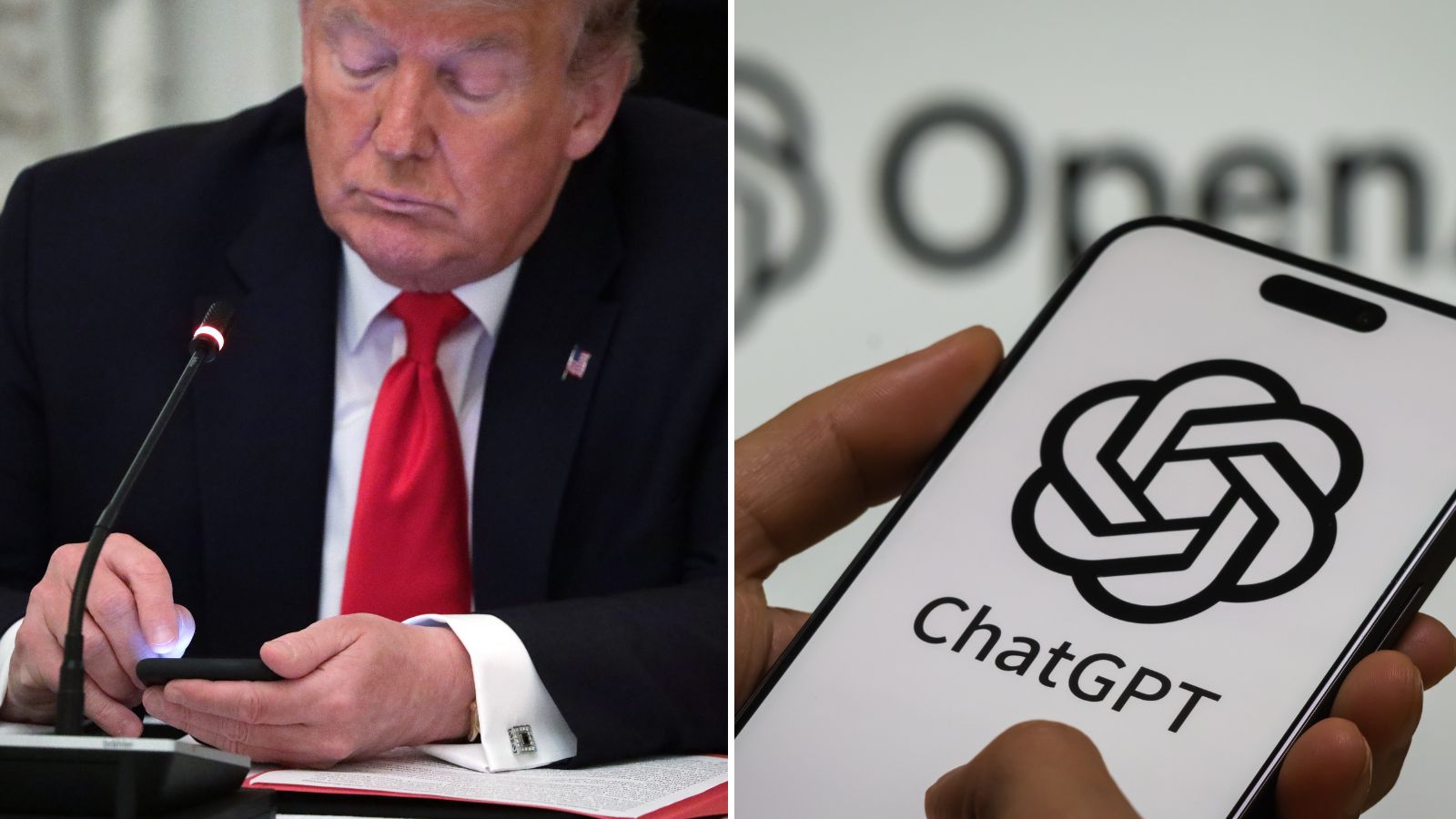
Internet analysts have taken note of the similarities between the Trump administration’s formula used to decide the “Liberation Day” tariffs, and the same methods provided by ChatGPT if asked.
Critics highlighted that ChatGPT and other artificial intelligence chatbots would provide very similar methods for setting tariff levels if they were asked to design a policy.
Newsweek contacted the White House for more information on the impact of the tariff policy via email.
The Context
The White House imposed a 10 percent baseline tariff on all imports, including those from U.S. allies and non-economically active regions, along with higher rates for countries with large trade surpluses against the U.S., on Wednesday. The administration expects the new rates to remain in place until the U.S. narrows a $1.2 trillion trade imbalance recorded last year.
What To Know
After the tariffs were announced, the White House released the formula reportedly used to set the tariffs: dividing the U.S. trade deficit with a given country by the value of U.S. imports from that country, then applying that percentage as a tariff. In some cases, a flat 10 percent rate was used if it was higher.
However, many pointed out that ChatGPT proposes the same approach if questioned on creating a global tariff policy. The White House has not commented on how the formula was created, so the similarities may simply be coincidental.
“I think they asked ChatGPT to calculate the tariffs from other countries, which is why the tariffs make absolutely no sense,” political commentator Steve Bonnell wrote on X, formerly Twitter.
“They’re simply dividing the trade deficit we have with a country with our imports from that country, or using 10 percent, whichever is greater.”
In screenshots, Bonnell showed that he asked ChatGPT the question: “What would be an easy way to calculate the tariffs that should be imposed on other countries so that the US is on even playing fields when it comes to trade deficit?”
Getty Images
The AI replied: “To calculate tariffs that help level the playing field in terms of trade deficits (with a minimum tariff of 10 percent), you can use a proportional tariff formula based on the trade deficit with each country. The idea is to impose higher tariffs on countries with which the U.S. has larger trade deficits, thus incentivizing more balanced trade.” This was followed by an equation that resembled the one shared by the White House.
Furthermore, writer James Surowiecki posted that he was able to reverse-engineer the exact method with a simple AI-driven formula, describing it as “extraordinary nonsense” and suggesting it offered a dangerously simplistic view of global trade economics.
Economist Rohit Krishnan tested the theory on other LLMs [large language models], finding that other flagship AIs produced similar answers, with Grok, Gemini, and Claude all creating the same tariff policy from an initial prompt.
Krishnan said: “This might be the first large-scale application of AI technology to geopolitics. 4o, o3 high, Gemini 2.5 pro, Claude 3.7, Grok all give the same answer to the question on how to impose tariffs easily.”
What People Are Saying
Financial journalist and author James Surowiecki wrote on social media: “Just figured out where these fake tariff rates come from. They didn’t actually calculate tariff rates + non-tariff barriers, as they say they did. Instead, for every country, they just took our trade deficit with that country and divided it by the country’s exports to us.
“It’s also important to understand that the tariff rates that foreign countries are supposedly charging us are just made-up numbers,” he added. “South Korea, with which we have a trade agreement, is not charging a 50 percent tariff on U.S. exports. Nor is the EU charging a 39 percent tariff.”
What Happens Next
In response to the latest tariffs, world leaders have pledged to enact their own retaliatory measures on U.S. imports. The tariffs are set to go into effect between April 5 and April 9.
